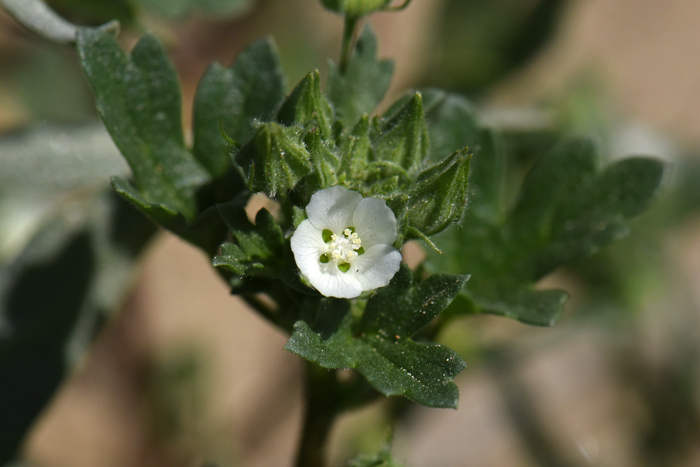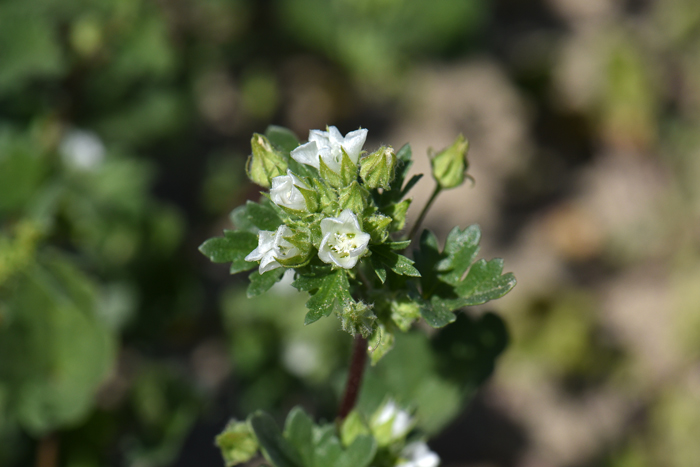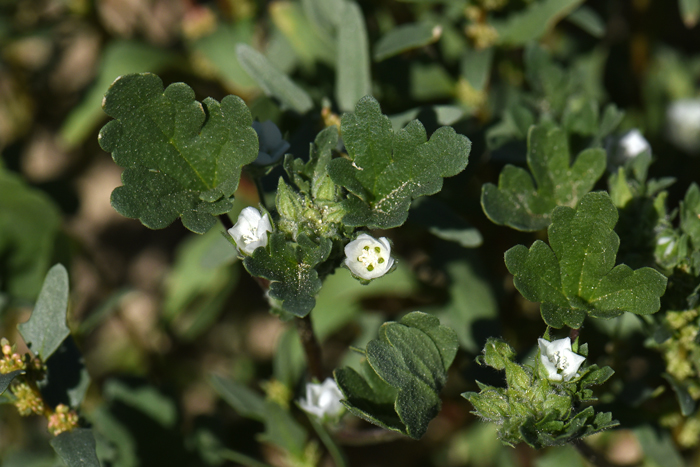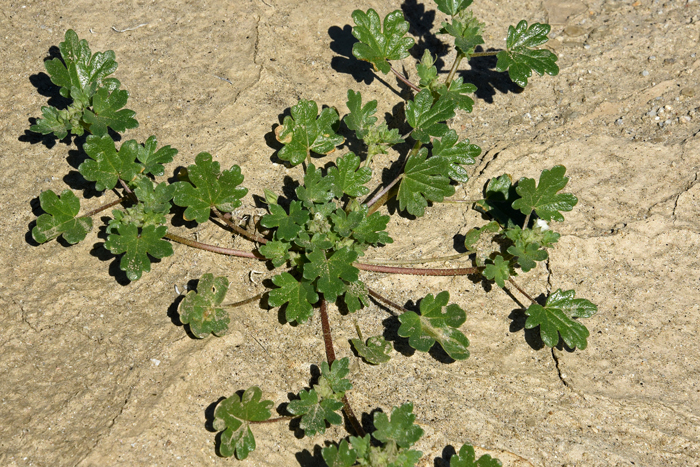Eremalche exilis, White Mallow




Scientific Name: Eremalche exilis
Common Name: White Mallow
Also Called: White Mallow, White-mallow, Eremalche exilis (Spanish: Malva)
Family: Malvaceae, Globe Mallow Family
Synonyms: (Malvastrum exilis)
Status: Native
Duration: Annual
Size: Up to 20 inches or so.
Growth Form: Forb/herb; plants prostrate to decumbent; plants finely stellate-hairy.
Leaves: Green, dark green; pinnately cleft with rounded lobes, 3 to 5 lobes, lobe tips variable - entire to 3-toothed; pubescence on leaves and stems mostly stellate.
Flower Color: White, pale pink-purple or lavender; flowers small; flowers solitary from leaf axils; flowers bisexual; fruit a disc-shaped schizocarp.
Flowering Season: February to June; March to May in California.
Elevation: 1,000 to 4,000 feet.
Habitat Preferences: Common along roadsides and in fields; habitats desert scrub.
Recorded Range: White Mallow is found in the southwestern United States in AZ, CA, NV, UT. It is also native to Baja California.
North America & US County Distribution Map for Eremalche exilis.
U.S. Weed Information: No information available.
Invasive/Noxious Weed Information: No information available.
Wetland Indicator: No information available.
Threatened/Endangered Information: No information available.
In the Southwestern United States there is 1 species of Eremalche. All data is approximate and subject to taxonomic changes.
Comments: The type (as Malvastrum exilis) from Pyramid Canyon, Mohave County (Newberry in 1858) Arizona. Eremalche exilis
In Southwest Desert Flora also see: Desert Fivespot, Eremalche rotundifolia.
Eremalche exilis has been used for food by southwestern United States indigenous peoples.
See complete listing of ethno-botanical uses at Native American Ethnobotany, University of Michigan, Dearborn.

